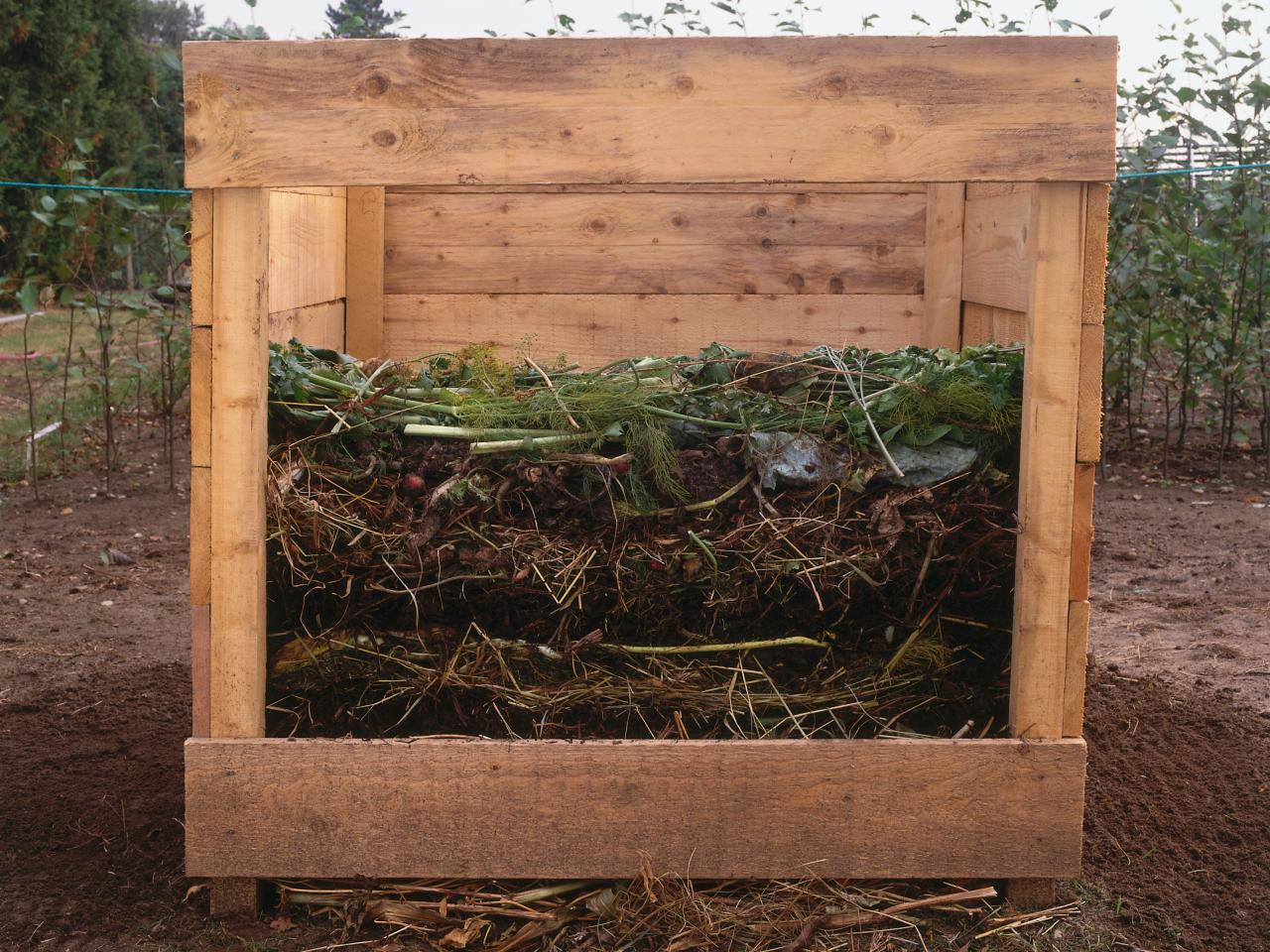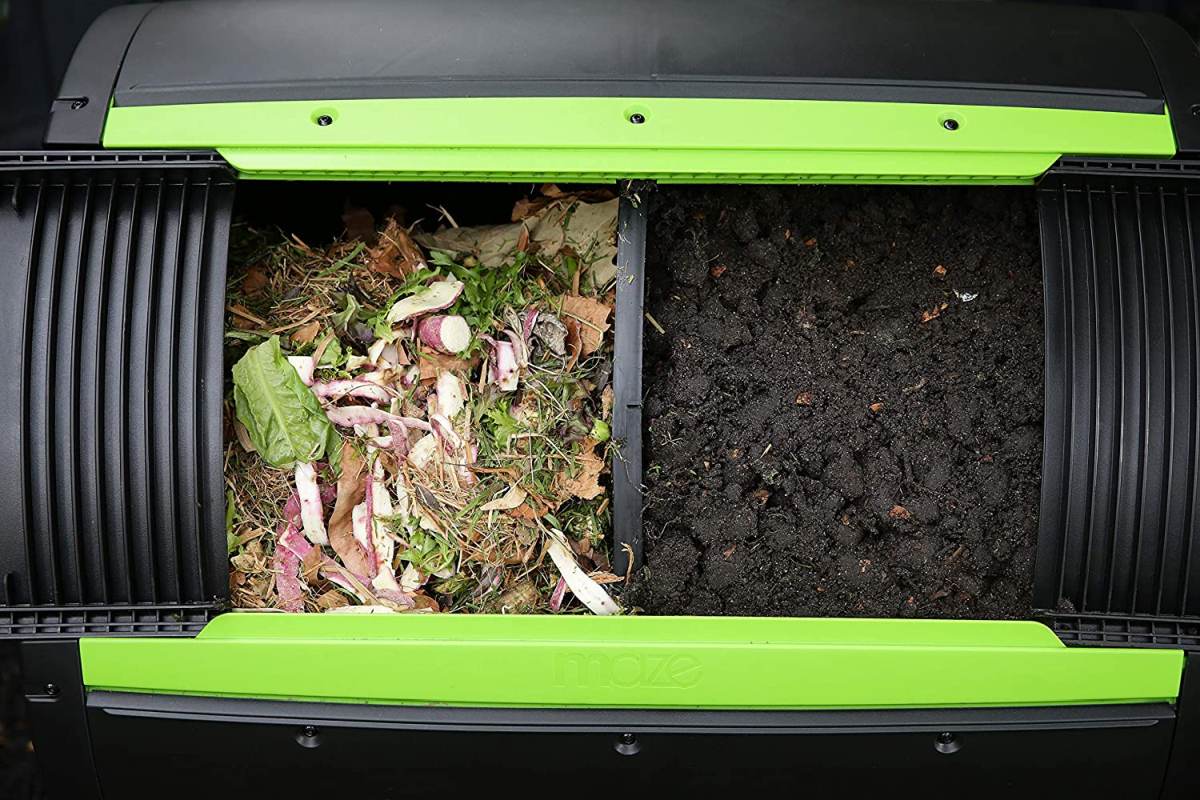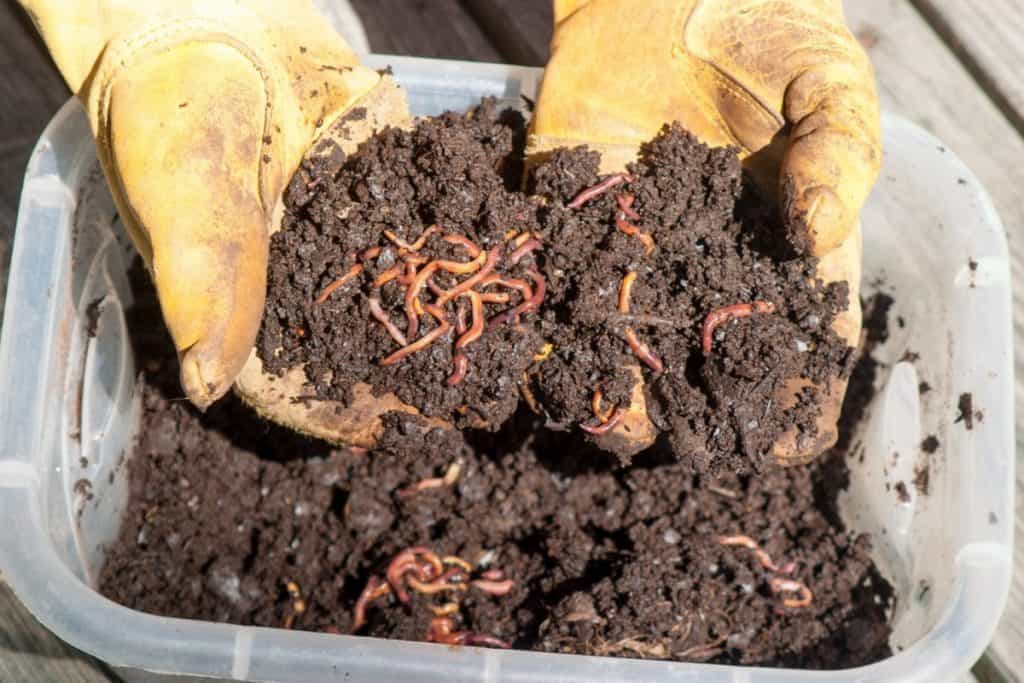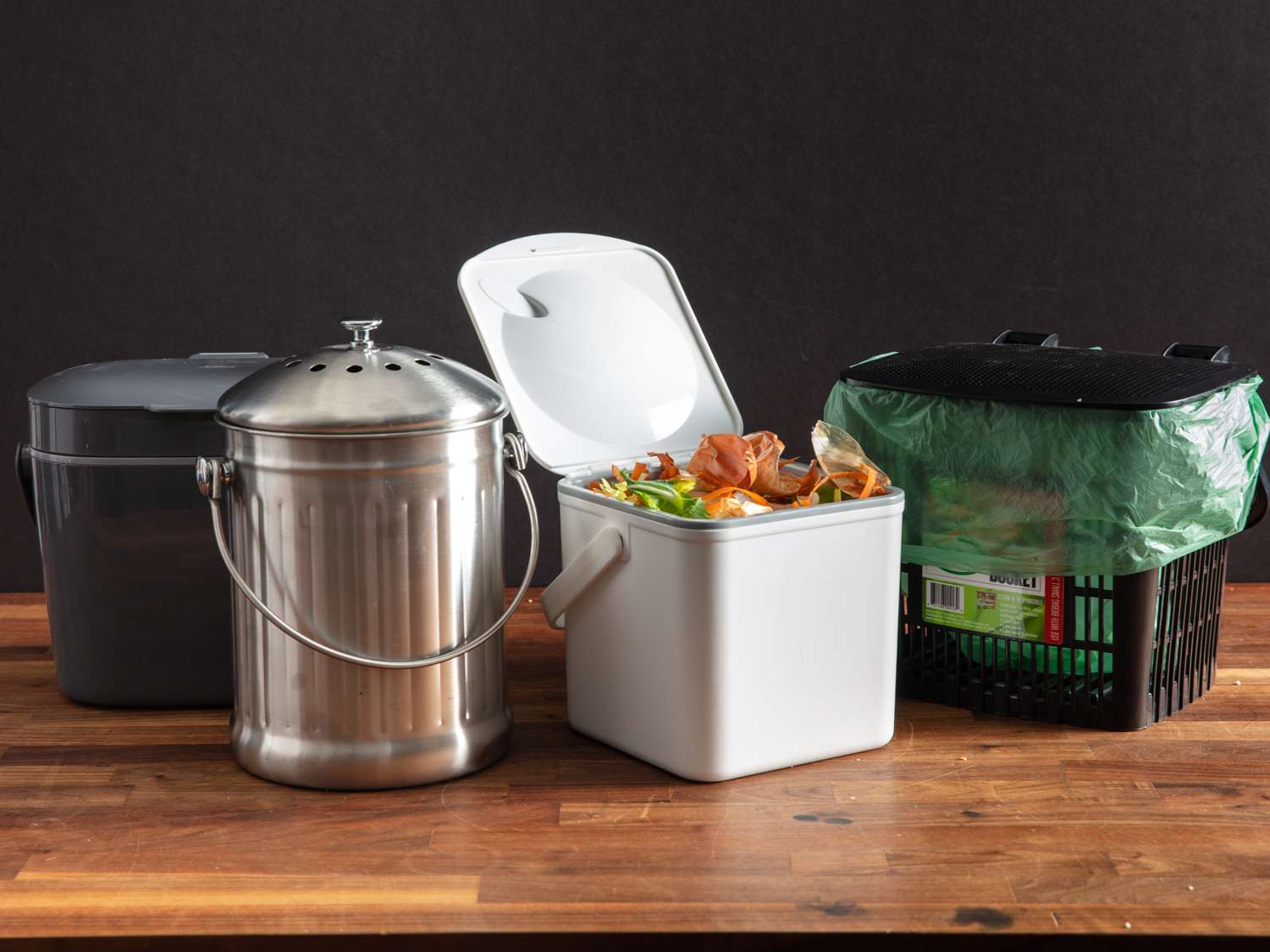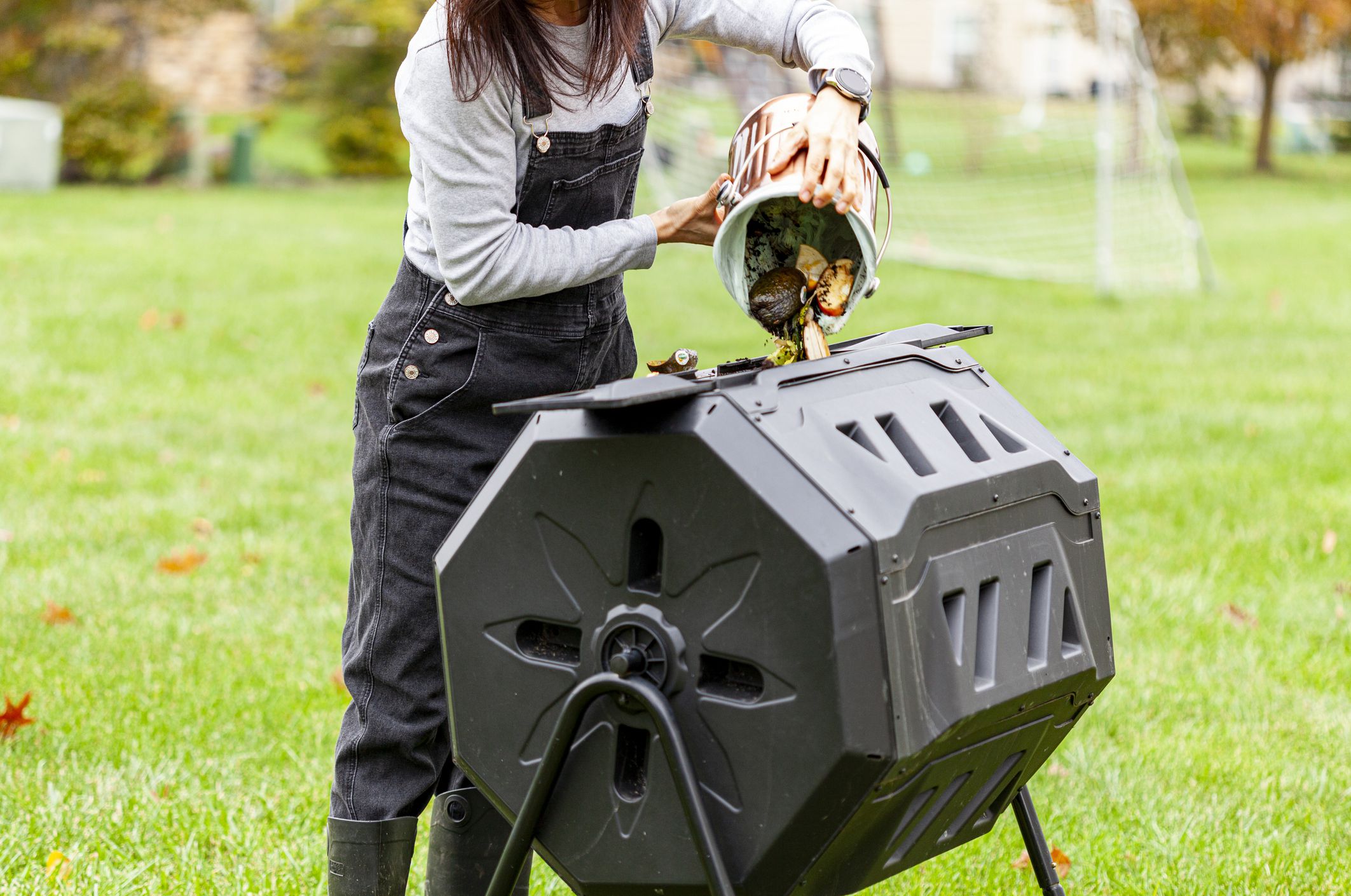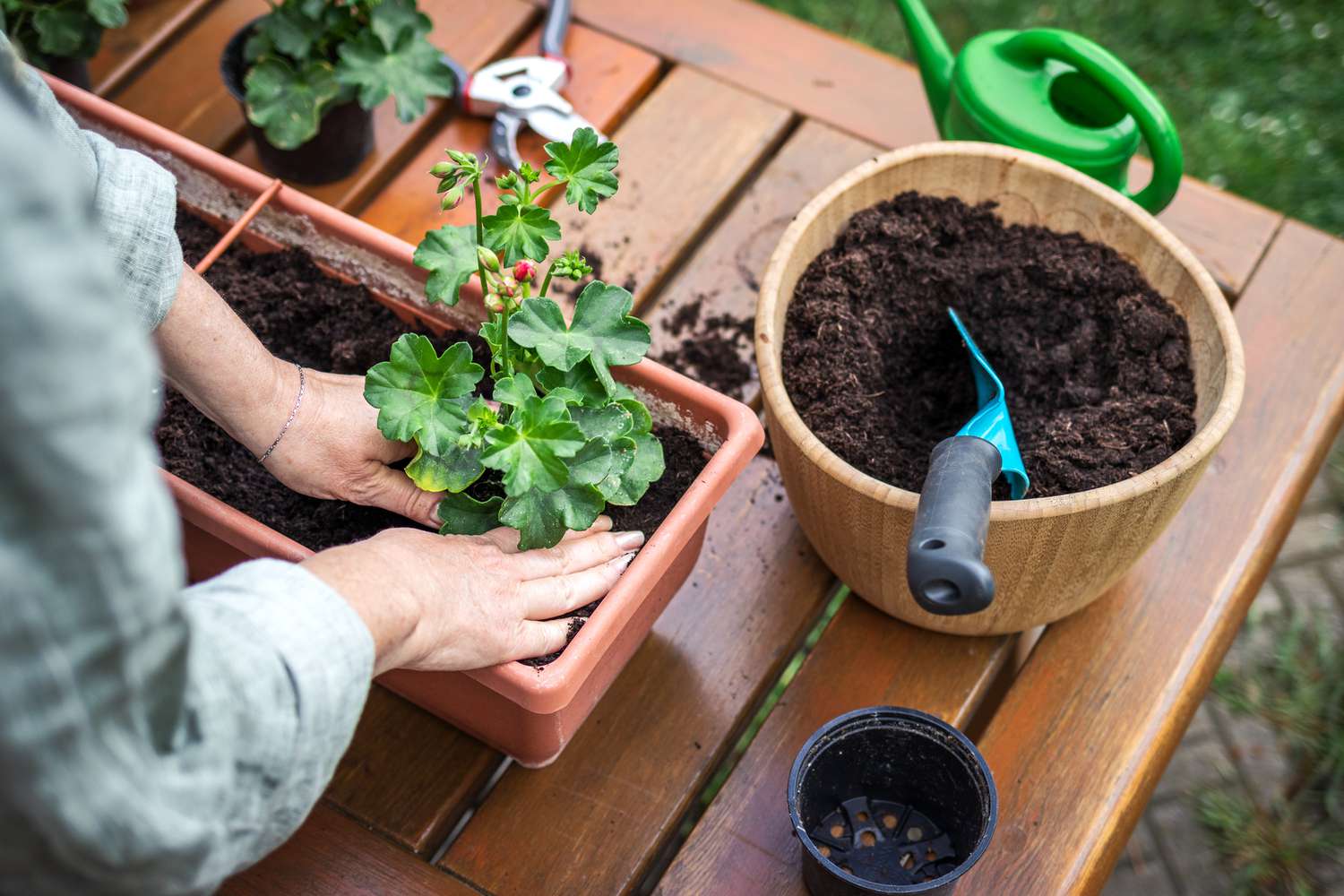Home>Gardening Tips and Tricks>Eco-Friendly Gardening>How Do You Use Compost
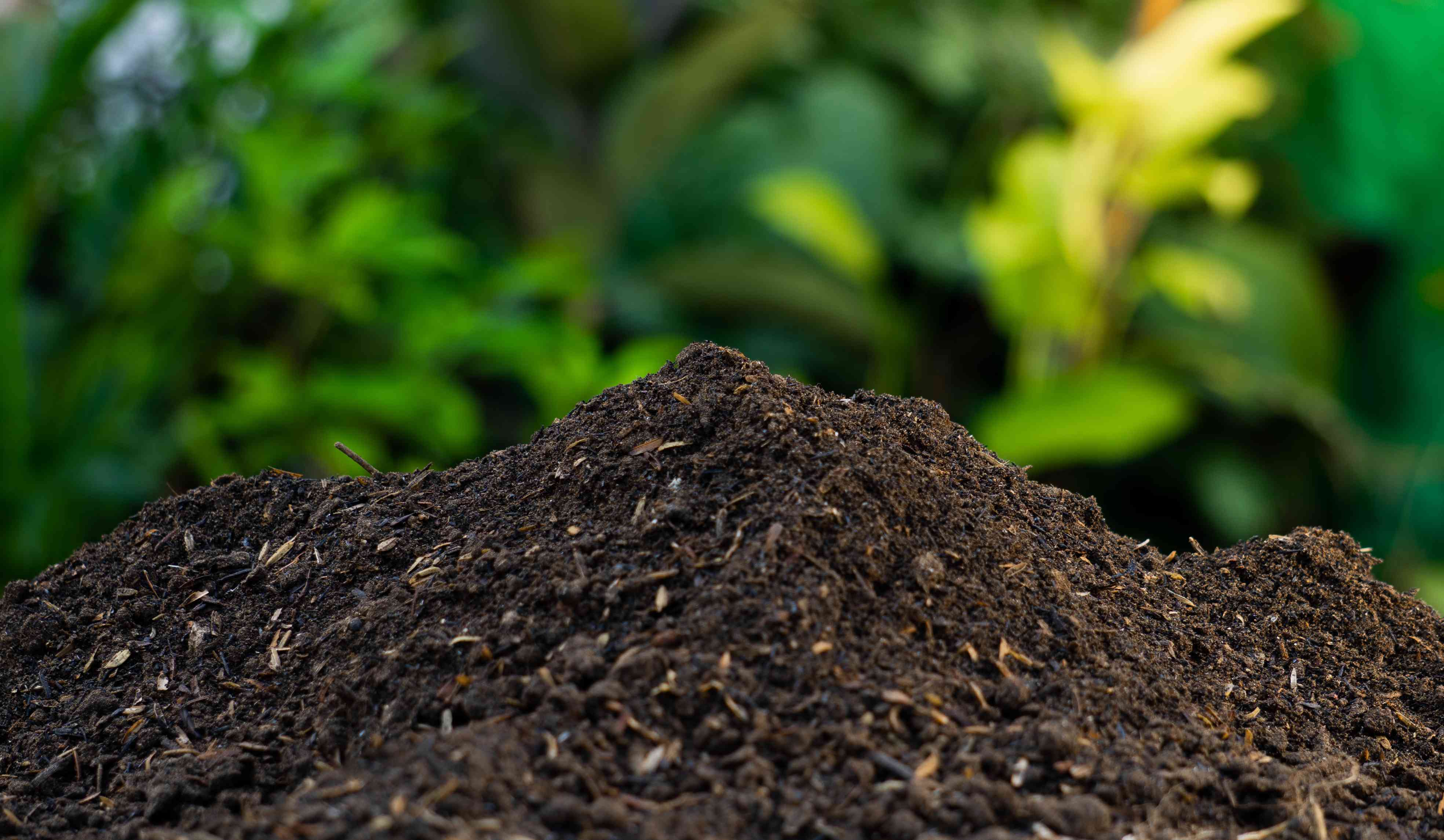

Eco-Friendly Gardening
How Do You Use Compost
Modified: January 22, 2024
Learn how to use compost in your eco-friendly gardening practices. Find tips and tricks for incorporating compost into your garden for healthier and more sustainable plants.
(Many of the links in this article redirect to a specific reviewed product. Your purchase of these products through affiliate links helps to generate commission for Chicagolandgardening.com, at no extra cost. Learn more)
Table of Contents
- What is Compost?
- Benefits of Using Compost
- Step-by-Step Guide to Using Compost
- Choosing the Right Composting Method
- Maintenance and Care of Compost
- Common Misconceptions about Composting
- Troubleshooting Composting Issues
- Using Compost in Different Gardening Practices
- Composting for Sustainability and Waste Reduction
- Conclusion
What is Compost?
Compost is an organic material that is created through the natural process of decomposition. It consists of a mixture of biodegradable materials such as kitchen scraps, yard waste, and other organic matter. When these materials break down, they transform into a nutrient-rich substance that is beneficial for plants and improves soil health.
Composting is a simple yet powerful way to recycle organic waste and create a sustainable gardening practice. By diverting organic materials from landfills and instead turning them into compost, we can reduce greenhouse gas emissions and contribute to the overall health of the planet.
The process of composting involves providing the right conditions for microorganisms, such as bacteria and fungi, to break down the organic materials. These microorganisms consume the organic matter, converting it into humus, which is a dark, crumbly substance that resembles soil.
Compost provides a multitude of benefits for gardeners and the environment. Firstly, it enriches the soil, improving its structure and fertility. It enhances moisture retention, assists in nutrient absorption, and promotes root development. Compost also acts as a natural fertilizer, supplying essential nutrients to plants in a slow-release form.
Moreover, composting reduces the need for chemical fertilizers and pesticides, supporting an eco-friendly approach to gardening. It minimizes waste by utilizing kitchen scraps, yard trimmings, and other organic matter that would otherwise end up in the trash. This reduces the strain on landfills and prevents the release of harmful methane gas into the atmosphere.
In summary, composting is a natural and sustainable way to recycle organic waste and enhance soil health. It benefits both gardeners and the environment by enriching the soil, reducing waste, and promoting eco-friendly gardening practices. By incorporating compost into your gardening routine, you can cultivate a more sustainable and fruitful garden while minimizing your impact on the planet.
Benefits of Using Compost
Using compost in your gardening practices offers a multitude of benefits. Let’s explore some of the key advantages:
- Improved Soil Structure: Compost helps improve soil structure by enhancing its ability to retain moisture and nutrients. It prevents soil erosion, compaction, and enhances drainage, creating an optimal environment for plant growth.
- Nutrient-Rich Soil: Compost is a natural fertilizer, providing a rich source of essential nutrients for plants. It contains a balanced combination of nitrogen, phosphorus, potassium, and micronutrients, which are slowly released to plants over time.
- Enhanced Plant Growth: The nutrients present in compost promote healthy plant growth, resulting in stronger roots, increased foliage, and more abundant flowering and fruiting. This translates into healthier, more productive plants in your garden.
- Reduced Need for Chemical Fertilizers: By incorporating compost into your garden soil, you can reduce reliance on synthetic fertilizers. Compost naturally releases nutrients and helps maintain a healthy microbial community in the soil, reducing the need for chemical interventions.
- Increase in Soil Moisture Retention: Compost acts as a sponge, improving the water-holding capacity of the soil. It helps retain moisture, reduces water runoff, and increases the availability of water to plants. This is especially beneficial in arid or drought-prone regions.
- Improved Soil Biology: Compost contains beneficial microorganisms, such as bacteria, fungi, and earthworms, that contribute to soil health. These organisms break down organic matter, enhance nutrient cycling, and improve soil aeration, creating an ecosystem that supports plant growth.
- Waste Reduction: Composting diverts organic waste from landfills, reducing the amount of trash that accumulates. By reusing kitchen scraps, yard trimmings, and other organic materials, you are contributing to waste reduction and promoting a more sustainable lifestyle.
- Environmental Benefits: Composting reduces greenhouse gas emissions associated with organic waste decomposition in landfills. It also helps prevent soil and water contamination by reducing the need for synthetic chemicals in gardening practices.
- Cost-Effective Solution: Composting is a cost-effective solution for improving soil and plant health. It uses readily available materials and reduces the need for purchasing chemical fertilizers and soil amendments.
By utilizing compost in your gardening endeavors, you can enjoy healthier plants, fertile soil, and contribute to a more sustainable and eco-friendly approach to gardening.
Step-by-Step Guide to Using Compost
Using compost in your gardening is a straightforward process. Follow these simple steps to incorporate compost into your garden effectively:
- Prepare the soil: Before applying compost, prepare the soil by removing weeds and loosening it with a garden fork or tiller. This helps improve the soil’s structure and allows for better absorption of nutrients from the compost.
- Add compost to the soil: Spread a layer of compost evenly over the soil surface. Use a garden rake or shovel to work the compost into the top few inches of soil. Aim for a depth of about 2-4 inches of compost in the planting area.
- Avoid concentrated application: Do not apply a thick layer of compost directly around the base of plants or over seeds. This can lead to stem rot or prevent seedling emergence. Spread the compost evenly, keeping it a few inches away from the plant stems or seedlings.
- Water thoroughly: After applying the compost, water the area thoroughly to help distribute the nutrients and moisture throughout the soil. This also helps settle the compost into the soil and promotes the growth of beneficial soil organisms.
- Apply compost regularly: For best results, apply compost at the beginning of each growing season or as needed. If you’re working on an existing garden, top-dress the soil with a thin layer of compost every few months to maintain nutrient levels.
- Use compost as mulch: Compost can also be used as a mulch around plants. Apply a layer of compost about 2-3 inches thick around the base of plants, leaving an inch or so between the compost and the plant stems. This helps retain soil moisture, suppress weeds, and provide a slow-release of nutrients.
- Compost tea: To further maximize the benefits of compost, you can make compost tea. Simply steep compost in water for a few days and use the resulting liquid to water plants or as a foliar spray. Compost tea provides a quick boost of nutrients and beneficial microbes.
- Maintain the compost pile: If you have a compost pile or bin, continue adding kitchen scraps, yard waste, and other organic materials regularly. Properly maintain the compost pile by turning it occasionally to promote decomposition and ensure a healthy balance of materials.
By following these steps, you can effectively incorporate compost into your gardening practices, improving soil fertility and promoting healthy plant growth.
Choosing the Right Composting Method
When it comes to composting, there are various methods to choose from. Each method has its own advantages and considerations. Here are some popular composting methods to help you make an informed decision:
- Traditional Backyard Composting: This method involves creating a compost pile or bin in your backyard. It is suitable for homeowners with ample outdoor space. Simply layer the organic materials, including kitchen scraps, yard waste, and dry leaves, and periodically turn the pile to aerate it and facilitate decomposition. Backyard composting is a cost-effective and convenient method that allows you to directly manage the composting process.
- Tumbler Composting: Tumbler composters are enclosed containers that allow for easy turning of the compost. These bins can be rotated to mix the materials, providing a more efficient and faster composting process. Tumbler composters are suitable for small spaces and provide better control over moisture and odor compared to open compost piles.
- Vermicomposting: Vermicomposting utilizes composting worms, such as red wigglers, to break down organic waste. It involves creating a specialized worm bin that provides a suitable environment for the worms to thrive. The worms consume the organic matter and produce nutrient-rich worm castings, also known as vermicompost. Vermicomposting is a great option for those with limited outdoor space or who want to compost indoors, such as in an apartment or urban setting.
- Bokashi Composting: Bokashi composting is an anaerobic fermentation process that uses a specialized Bokashi bran or liquid to break down organic waste. It is a suitable method for those who want to compost food scraps quickly and without odors. Bokashi composting can be done indoors or outdoors and utilizes airtight containers. The fermented organic waste can later be buried in the soil or added to a traditional compost pile to complete the decomposition process.
- Compost Tumblers: Compost tumblers provide a convenient and efficient way to compost kitchen scraps and yard waste. These cylindrical containers are mounted on a frame and can be rotated to mix the compost materials. Compost tumblers offer better odor control and faster decomposition compared to traditional compost piles. They are suitable for small or urban spaces and can be easily turned even by individuals with limited physical strength.
Consider factors such as available space, amount of organic waste generated, desired composting speed, and personal preference when choosing a composting method. Regardless of the method you choose, always remember to maintain a proper balance of green and brown materials, keep the compost pile or bin adequately moist, and monitor the temperature to ensure optimal decomposition.
Choose the composting method that aligns with your lifestyle and resources, and enjoy the rewards of creating nutrient-rich compost for your garden.
Maintenance and Care of Compost
Proper maintenance and care of your compost pile or bin are essential to ensure optimal decomposition and to create high-quality compost. Here are some important tips to help you maintain and care for your compost:
- Balance the compost materials: Maintain a proper balance of green and brown materials in your compost. Greens, such as kitchen scraps, grass clippings, and fresh plant trimmings, provide nitrogen. Browns, such as dry leaves, twigs, and shredded paper, provide carbon. Aim for a ratio of roughly 3 parts browns to 1 part greens to achieve the right balance.
- Aerate the compost: Regularly turning or mixing the compost helps to introduce oxygen, which promotes decomposition. Use a garden fork, compost turner, or aerating tool to turn the materials every couple of weeks. This also helps prevent odors and encourages the breakdown of organic matter.
- Keep the compost moist: The compost pile should be kept consistently moist, like a well-wrung sponge. Water it if it becomes dry, paying attention to areas that may dry out quickly. Conversely, if it becomes too wet, add dry, absorbent materials like dry leaves or shredded paper to absorb excess moisture.
- Monitor the temperature: The ideal temperature range for compost is usually between 130°F (55°C) and 160°F (71°C). These temperatures help kill pathogens and speed up decomposition. Use a compost thermometer to periodically check the temperature and adjust the carbon-to-nitrogen ratio if needed. If the compost becomes too hot, turn it more frequently to cool it down.
- Manage pests and odors: To deter pests, avoid adding meat, dairy, oily food scraps, or pet waste to the compost. This will help prevent unwanted critters from being attracted to the pile. If odors occur, it could indicate a lack of oxygen or an imbalance of materials. Mix in dry carbon-rich materials, aerate the pile more frequently, or adjust the nitrogen-to-carbon ratio.
- Patience and time: Composting is a natural process that takes time. Depending on the composting method and conditions, it can take several months to a year for the materials to fully break down into rich compost. Be patient and allow nature to work its magic.
- Harvesting the compost: When the compost is dark, crumbly, and earthy-smelling, it is ready to be used in the garden. Harvest the compost by sifting it through a mesh screen or simply scoop it out from the bottom of the pile or bin. Any unfinished or large materials can be returned to the compost to continue decomposing.
By following these maintenance tips, you can create a well-functioning composting system that produces nutrient-rich compost for your garden while minimizing odors, pests, and other potential issues.
Common Misconceptions about Composting
Composting is a fantastic way to reduce waste, improve soil health, and practice sustainable gardening. However, there are several misconceptions that people may have about composting. Let’s debunk some of the most common misconceptions:
- Composting is complicated: Many people believe that composting is a complex and time-consuming process. In reality, composting can be as simple as collecting kitchen scraps and yard waste and allowing them to decompose naturally. With a basic understanding of the composting principles, anyone can successfully compost at home.
- Composting smells bad: While it’s true that composting can produce odors, a properly maintained compost pile should not have a foul smell. Unpleasant odors are often a result of improper balance of green and brown materials or lack of proper aeration. By maintaining the right balance and regularly turning the compost, you can minimize or eliminate any odors.
- Composting attracts pests: Another common misconception is that composting attracts pests like rats and flies. While it’s possible for pests to be attracted to poorly managed compost piles that contain food waste or meat, following proper composting practices can deter pests. Avoid adding meat, dairy, or oily food scraps, and regularly turn the compost to discourage pests.
- Composting requires a large space: Many people believe that composting is only feasible for those with large yards or gardens. However, composting can be adapted to suit different living situations. Options like vermicomposting or using compost tumblers are ideal for small spaces or apartments. Even in a small garden, a compact compost bin can be used effectively to convert organic waste into nutrient-rich compost.
- Composting takes too long: Decomposition time can vary depending on factors such as the composting method, materials used, and environmental conditions. While it’s true that composting takes time, active management and the right balance of carbon and nitrogen can speed up the process. Using proper techniques, you can expect to produce usable compost within a few months.
- Composting is only for gardeners: Some people believe that composting is solely for those with gardens or large-scale agricultural operations. However, even if you don’t have a garden, composting is still a valuable practice. Finished compost can be donated or used to enrich community gardens, flower beds, or potted plants.
It’s important to dispel these misunderstandings and encourage more individuals to engage in composting. Composting is a flexible, accessible, and environmentally friendly practice that can benefit individuals, communities, and the planet as a whole.
Troubleshooting Composting Issues
Composting is a natural process, but sometimes challenges can arise. Here are some common issues that may occur during composting and how to troubleshoot them:
- Slow decomposition: If the compost is taking longer to break down or is not decomposing at all, it may be due to a lack of nitrogen, insufficient moisture, or insufficient aeration. Ensure that you have a good balance of green and brown materials and add more nitrogen-rich materials, such as grass clippings or vegetable scraps, if necessary. Water the compost pile to ensure it stays moist, and turn the pile more frequently to introduce oxygen.
- Foul odors: A foul smell coming from the compost may indicate improper aeration or too much nitrogen-rich material. Turn the compost more frequently to improve airflow and mix in more brown materials to balance the nitrogen content. Avoid adding meat, dairy products, or oily food scraps, as they can contribute to strong odors.
- Presence of pests: If you notice an increase in pests, such as flies or rodents, it may be a result of adding food waste that attracts them. Avoid adding meat, fish, or oily foods to prevent pest infestations. Ensure that the compost pile is properly covered, and regularly turn the pile to discourage pests from taking up residence.
- Dry or wet compost: Compost should have the consistency of a damp sponge. If it is too dry, water the pile and mix in moist green materials. If it is too wet, add more brown materials or dry leaves to absorb excess moisture.
- Unfinished compost: Sometimes, you may find pieces of undecomposed material in your compost. This can be due to adding large or woody materials that take longer to break down or not turning the pile regularly. To resolve this, chop large materials into smaller pieces before adding them to the compost pile and turn the pile more frequently to ensure even decomposition.
- Weed seeds in compost: If weed seeds are sprouting in your compost, it may be because the pile did not reach a high enough temperature to kill the seeds. To prevent weed growth, make sure to maintain a well-balanced compost pile with proper nutrient ratios and sufficiently high temperatures.
By troubleshooting these composting issues, you can address challenges and create a more efficient and successful composting system. Remember that composting is a learning process, and with time and adjustments, you can achieve optimal results.
Using Compost in Different Gardening Practices
Compost is a versatile and valuable resource that can be utilized in various gardening practices to improve soil fertility and promote plant growth. Here are some ways to incorporate compost into different gardening activities:
- Soil Amendment: Incorporate compost into garden soil as a natural amendment. Mix compost into the top few inches of soil before planting to improve soil structure, enhance nutrient retention, and promote beneficial microbial activity.
- Planting Mix: Create a nutrient-rich planting mix by blending compost with other ingredients like garden soil, peat moss, or vermiculite. This improvised potting mix provides essential nutrients to potted plants, seedlings, and transplants.
- Mulch: Apply a layer of compost around the base of plants as a mulch. This helps suppress weed growth, retain soil moisture, regulate soil temperature, and gradually release nutrients to feeding roots. Avoid direct contact of compost with the stems of plants to prevent potential rot or disease.
- Compost Tea: Make compost tea by steeping compost in water. Use this nutrient-rich liquid to water plants or as a foliar spray. Compost tea provides an immediate boost of nutrients and beneficial microorganisms, enhancing plant growth and disease resistance.
- Seed Starting: Create a seed-starting mix by combining compost with a light, sterile growing medium. This ensures that young seedlings receive essential nutrients and beneficial microorganisms for healthy root development.
- Transplanting: Prior to transplanting, amend the planting hole with compost. This provides a nutrient-rich environment for the new plant and aids in root establishment and growth.
- Compost as Top-Dressing: Apply a thin layer of compost as a top-dressing around established plants throughout the growing season. This acts as a slow-release fertilizer, providing nutrients to plants as they need them.
- Compost for Raised Beds: Fill raised beds with a mixture of compost and topsoil to create a nutrient-dense growing environment. Raised beds with compost-rich soil promote healthier plant growth and higher yields.
- Compost for Compost Tea: Utilize finished compost as a base for creating compost tea. Mix the compost with water, aerate, and strain to produce a liquid fertilizer that can be applied to plants via watering or foliar spraying.
- Compost for Lawn Care: Spread compost evenly over the lawn surface and rake it into the grass to improve soil quality, enhance water retention, and promote healthier, greener grass.
By incorporating compost into various gardening practices, you can maximize its benefits and create a thriving garden with improved soil fertility and healthier plants.
Composting for Sustainability and Waste Reduction
Composting is a powerful tool for promoting sustainability and reducing waste. By diverting organic materials from landfills and turning them into nutrient-rich compost, we can make a positive impact on the environment. Here are some reasons why composting is essential for sustainability and waste reduction:
- Reducing Landfill Waste: Organic waste, such as food scraps and yard trimmings, makes up a significant portion of municipal solid waste. By composting these materials, we can divert them from overflowing landfills. This reduces the strain on landfill capacity and minimizes the release of harmful methane gas, a potent greenhouse gas, into the atmosphere.
- Minimizing Greenhouse Gas Emissions: When organic waste decomposes in landfills, it produces methane, a greenhouse gas that contributes to climate change. Composting organic materials instead of sending them to landfills reduces methane emissions. Turning organic waste into compost allows it to break down aerobically, significantly reducing the production of methane.
- Nourishing the Soil: Compost acts as a natural soil amendment, enriching the soil with essential nutrients and organic matter. By incorporating compost into the soil, we can improve its fertility, structure, and moisture-holding capacity. Healthy soil supports the growth of healthy plants, reduces the need for chemical fertilizers, and helps prevent soil erosion.
- Encouraging Sustainable Gardening: Compost provides a sustainable and eco-friendly alternative to synthetic fertilizers and other chemical interventions. By using compost in gardening practices, we can enhance plant health, support beneficial soil organisms, and promote a more balanced and resilient ecosystem.
- Promoting Circular Economy: Composting represents a circular approach to waste management. Instead of disposing of organic waste, it is transformed into a valuable resource that can be used to enrich the soil and nourish plants. This closes the loop and reduces the need for external inputs in gardening and agriculture.
- Conserving Resources: Using compost reduces the need for synthetic fertilizers, which require significant energy, water, and resources to produce. By harnessing the power of compost, we can minimize our reliance on finite resources and contribute to a more sustainable and circular economy.
- Empowering Individuals: Composting is an activity that can be done by anyone, whether you have a small backyard or a balcony garden. It empowers individuals to take control of their waste and actively participate in reducing their environmental impact.
By embracing composting as a sustainable practice, we can significantly reduce waste, conserve resources, and contribute to a healthier planet for future generations.
Conclusion
Eco-friendly gardening practices are becoming increasingly important in our efforts to protect the environment and promote sustainability. Composting is a powerful and accessible method that allows us to reduce waste, improve soil health, and cultivate thriving gardens. By understanding the process and benefits of composting, we can make a positive difference in our homes and communities.
Compost is a valuable resource that enriches the soil with essential nutrients, improves soil structure, and supports the growth of healthy plants. It reduces the need for chemical fertilizers and pesticides, minimizing our impact on the environment. Composting also helps divert organic waste from landfills, reducing greenhouse gas emissions and promoting a more circular economy.
To effectively use compost, it is important to follow a step-by-step guide, choose the right composting method, and maintain and care for the compost pile. Troubleshooting common issues ensures the composting process runs smoothly. Additionally, incorporating compost into various gardening practices, such as soil amendment, mulching, and seed starting, maximizes its benefits and promotes sustainable gardening.
Ultimately, composting is a simple and impactful way for individuals to contribute to a more sustainable future. By reducing waste, conserving resources, and nourishing the soil, we can create healthier ecosystems and create a more harmonious relationship with the Earth.
So, whether you have a small garden, a balcony, or even just a countertop space, start composting today and join the efforts to protect our planet, one compost pile at a time.

